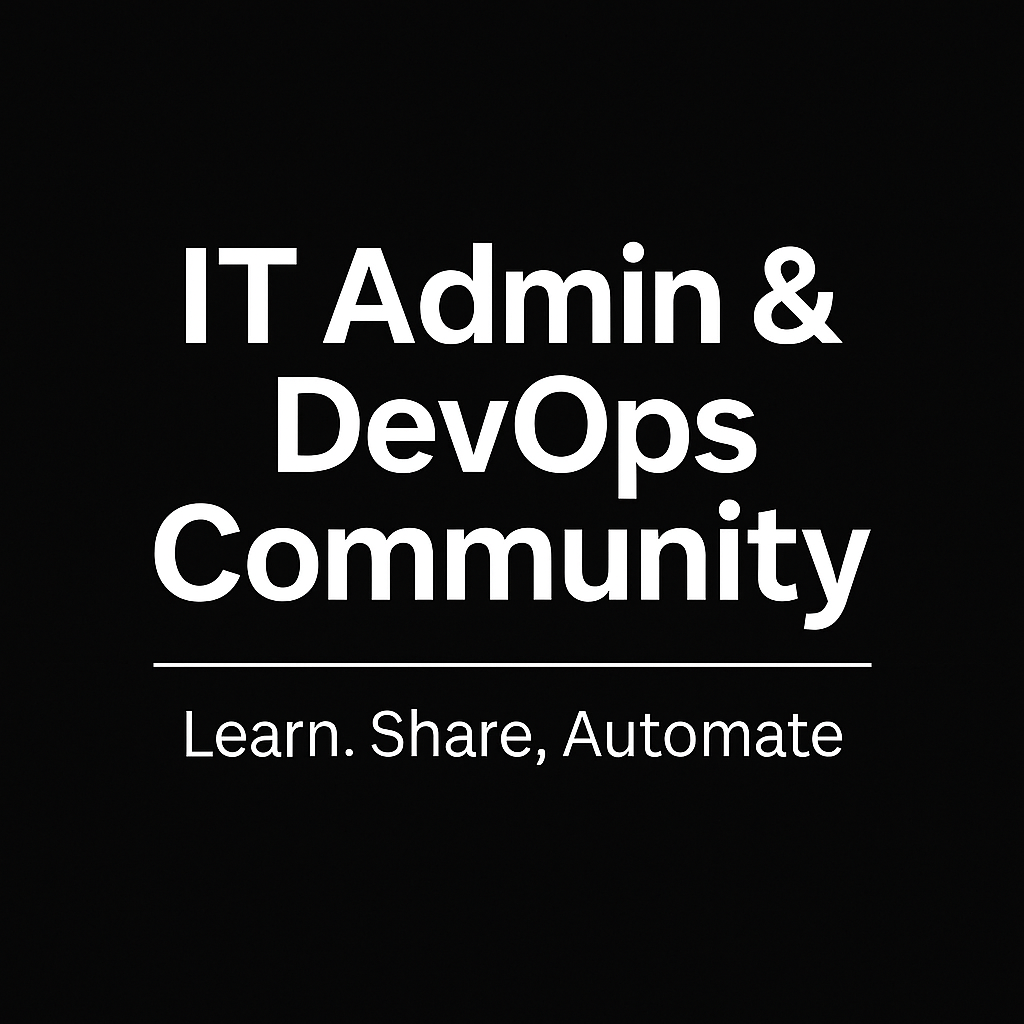🌐 Understanding APIs: The Backbone of Cloud Services and How DNS Failures Can Bring Them Down
Learn how APIs power cloud services like AWS, how DNS failures can disrupt them, and what the October 2025 US-EAST-1 outage teaches about system resilience.

Date: October 20, 2025
Category: Cloud Infrastructure, DevOps, Networking
Tags: API, DNS, AWS, Cloud, Networking, DevOps, System Reliability, US-EAST-1 Outage
🧭 Introduction
Every digital service — from a mobile banking app to a global cloud infrastructure like AWS — runs on APIs (Application Programming Interfaces).
They are the nervous system of the internet, silently connecting applications, systems, and data across millions of servers every second.
But what happens when the core dependency of these APIs — DNS resolution — fails?
The recent AWS US-EAST-1 outage (October 2025) gave us a perfect real-world case study.
⚙️ What Is an API and How Does It Work?
An API (Application Programming Interface) is a set of rules and protocols that allow one piece of software to interact with another.
You can think of it as a messenger between applications, ensuring structured and secure communication.
🧩 Simple Example
When you book a flight online:
- You enter your travel details.
- The website sends an API request to the airline’s system.
- The airline’s server responds with available flights.
- The booking website displays the results.
This request–response mechanism is the essence of how APIs work.
💡 How APIs Power the Cloud
In cloud systems, APIs connect almost every service imaginable:
| Layer | Example AWS API |
|---|---|
| Compute | EC2 API (for starting/stopping servers) |
| Storage | S3 API (for uploading or retrieving files) |
| Database | DynamoDB API (for queries and updates) |
| Monitoring | CloudWatch API (for metrics and logs) |
| Networking | VPC and Route 53 APIs (for DNS and routing) |
| Automation | Lambda, CloudFormation APIs |
Every time a developer triggers an AWS command — via the console, CLI, or SDK — it sends an API call to AWS’s backend systems.
These requests typically look like:
POST https://ec2.us-east-1.amazonaws.com/
{
"Action": "RunInstances",
"InstanceType": "t3.micro",
"ImageId": "ami-12345678"
}
Behind the scenes, AWS APIs communicate via HTTPS endpoints, authenticated using IAM roles, tokens, or signed requests.
🕸️ How DNS Fits Into the API Ecosystem
Here’s the hidden but vital piece:
Every API request must resolve a domain name to reach the correct AWS endpoint.
For instance, when you make a call to:
https://dynamodb.us-east-1.amazonaws.com
your system first asks the Domain Name System (DNS):
“What IP address corresponds to this domain?”
If DNS fails, your API call fails — no connection can be made.
In a distributed cloud system like AWS, this means:
- APIs that depend on internal DNS cannot route correctly.
- Dependent microservices (like Lambda or EC2 Auto Scaling) stop communicating.
- Monitoring and authentication services (like CloudWatch or IAM) become unreachable.
🚨 Case Study: AWS US-EAST-1 Outage (October 20, 2025)
At 12:11 AM PDT, AWS began investigating increased error rates across multiple services in the US-EAST-1 (N. Virginia) region.
The issue was quickly traced to DNS resolution failures affecting internal AWS endpoints such as:
dynamodb.us-east-1.amazonaws.comec2.us-east-1.amazonaws.comiam.us-east-1.amazonaws.com
Because every AWS service uses APIs that depend on these endpoints, the DNS failure cascaded into:
| Impacted Layer | Examples | Effect |
|---|---|---|
| Compute | EC2, Lambda | Failed instance launches and event processing |
| Database | DynamoDB, RDS | API timeouts and data access errors |
| Security | IAM, STS | Authentication delays |
| Networking | CloudFront, VPC | Connectivity loss |
| Monitoring | CloudWatch | Metric and log delays |
Essentially, AWS’s internal API network lost its ability to resolve key addresses, creating a chain reaction of connection errors.
🧠 What Exactly Happened (Technically)
When the DNS resolver responsible for handling API domain lookups in US-EAST-1 failed, every system trying to connect via that resolver received a timeout.
For example, this common internal flow failed:
Lambda Function → calls → DynamoDB API
The DNS couldn’t resolve the target domain, so the Lambda function returned a network error like:
Error: ENOTFOUND dynamodb.us-east-1.amazonaws.com
Even though DynamoDB itself was running fine, the API endpoint became unreachable due to DNS resolution problems.
This situation highlights how DNS is a single point of failure in many modern systems — even in the cloud.
🔍 Recovery and Mitigation
Between 2:00 AM and 6:30 AM PDT, AWS engineers rolled out multiple mitigations:
- Restored internal DNS servers
– Rebuilt regional resolver clusters and re-routed traffic. - Cleared API request backlogs
– Services like Lambda, SQS, and CloudTrail began catching up. - Re-enabled EC2 launches gradually
– Introduced rate limiting to avoid overloading the recovery process. - Confirmed DNS stability
– Engineers observed normal propagation across Availability Zones.
By 6:42 AM, most AWS APIs were functional again, and Lambda event processing was fully restored.
However, by 7:14–7:29 AM, AWS reported secondary API connectivity issues, indicating intermittent recovery instability — likely due to synchronization between DNS resolvers and internal load balancers.
🧰 How to Build Resilient API-Driven Systems
The outage serves as a powerful reminder for developers and architects.
Here are the best practices for API resilience in cloud environments:
1. Implement Retry Logic
APIs fail — but transient errors can often be solved by automatic retries with exponential backoff.
2. Use Multi-Region Architecture
Avoid dependency on a single AWS region (especially US-EAST-1).
Deploy your APIs and databases across multiple regions.
3. Monitor API Health
Use synthetic monitoring tools (Pingdom, Datadog, or Grafana) to detect API degradation early.
4. Cache DNS Responses
Locally caching resolved DNS addresses can prevent failures during temporary outages.
5. Use Circuit Breakers
If an API fails repeatedly, automatically stop requests for a short cooldown period.
6. Plan for Graceful Degradation
Design your apps so they can continue partial operations even if one API fails.
🧭 The Broader Lesson: APIs Are Only as Strong as Their Foundations
APIs have made the world’s digital infrastructure modular and scalable — but also interdependent.
When one core layer (like DNS or authentication) breaks, the ripple effects are massive.
The AWS US-EAST-1 event showed that:
- APIs are not isolated — they rely on networks, DNS, and IAM layers.
- Service discovery failures can break entire systems.
- Resilience must be built across every layer, not just application logic.
🔚 Conclusion
APIs are the lifeblood of modern cloud computing — powering every transaction, automation, and data exchange across the internet.
But this power comes with fragility: even a small DNS resolution issue can paralyze global systems.
The AWS outage of October 2025 is more than a reminder — it’s a blueprint for designing fault-tolerant, API-driven architectures.
If cloud engineers take away one lesson, it should be this:
Always design for failure — especially in the invisible layers like DNS and networking.
📍 Official Source: AWS Service Health Dashboard – US-EAST-1 Incident
📘 Full Report: Dargslan Publishing AWS Outage Summary
If you want to learn more about API design, cloud reliability, and DevOps resilience,
visit 👉 dargslan.com — your hub for deep technical learning and professional IT publications.




